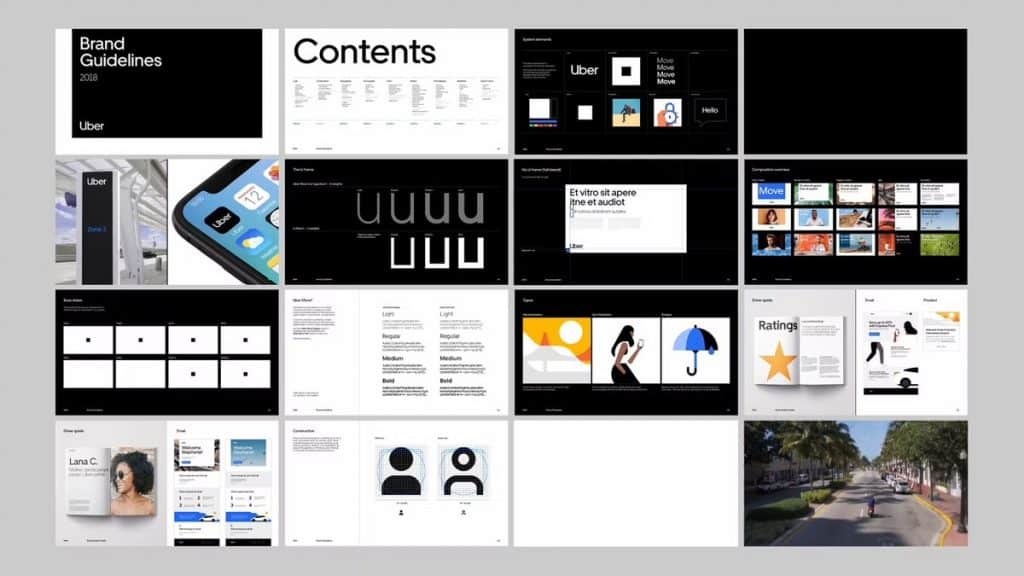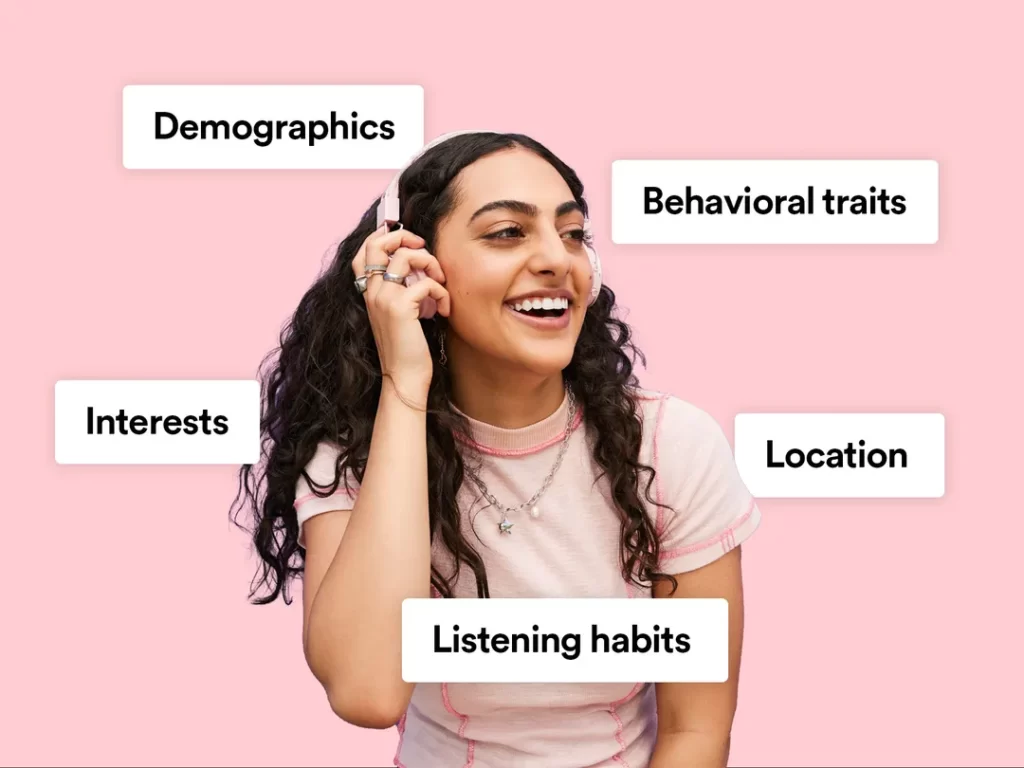Brand Strategies: Building a Strong Identity for Success
Branding. It's more than just a logo or a catchy tagline. It's the essence of your company's identity, the face you show the world, and the feelings you stir up in your customers' minds when they hear your name. You know this, and that's why you're here.
Did you know that consistent brand presentation across all platforms can increase revenue by up to 23%? Or that 68% of consumers say that shared values are the main reason they have a relationship with a brand? It's not just about aesthetics or market presence. Your brand embodies your company's values, mission, and unique selling proposition. And it's powerful.
In this article, “Brand Strategies: Building a Strong Identity for Success,” we will dive into the nuts and bolts of branding. We'll explore the importance of building a solid brand identity, discuss the steps necessary to create a compelling and consistent brand and share insights on leveraging your brand identity for maximum impact.
Whether you're just starting or looking to give your existing brand a makeover, this article is for you. So grab a cup of coffee (or tea, if that's your thing), settle in, and let's talk branding. Together, we'll uncover the secrets of successful brand strategies and lay the foundation for your brand's triumphant future.
Because remember, a strong brand doesn't just happen—it's built. And it's high time we roll up our sleeves and start building yours.
Table of Contents
Understanding Brand Strategies

A brand strategy is a well-thought-out plan that guides how your brand presents itself. It's like a roadmap that helps you navigate through the crowded marketplace and stand out from the competition. To create a powerful brand strategy, you must make deliberate decisions that shape and communicate your brand's unique identity, positioning, and value proposition.
To start, it's essential to understand your target audience deeply. Who are the people you want to connect with? What are their needs, desires, and preferences? By gaining a clear understanding of your audience, you can tailor your brand strategy to resonate with them on a personal level. It's like speaking their language and building a meaningful relationship.
But a brand strategy doesn't operate in a vacuum. Keep a keen eye on the competitive landscape. What are your competitors doing? How are they positioning themselves? By analysing your competition, you can identify gaps in the market and find opportunities to differentiate your brand. This way, you can offer something unique and compelling to your audience, making them choose you over others.
Furthermore, a brand strategy should always align with your overall business objectives. What are you aiming to achieve as a company? Whether it's increasing market share, driving sales, or creating a positive social impact, your brand strategy should support those goals. It's about leveraging your brand's strengths and attributes to drive business success while staying true to your core values.
So, a brand strategy is a carefully crafted plan encompassing various elements. It involves understanding your target audience, analysing the competition, and aligning with your business objectives. By developing a robust brand strategy, you can shape how your brand is perceived, build strong connections with your audience, and ultimately drive your business forward in today's dynamic market.
1.1 The Purpose of Brand Strategies
Brand strategies serve multiple purposes within an organisation:
- Differentiation: In a crowded marketplace, brands must stand out to capture consumers' attention and loyalty. A well-defined brand strategy helps articulate the unique selling points that set a company apart.
- Brand Identity: A brand strategy helps create a consistent and recognisable identity for the business. It involves defining brand values, personality, tone of voice, visual elements, and other components that shape how consumers perceive and connect with the brand.
- Building Trust: Consumers are more likely to engage with brands they trust. A robust brand strategy builds trust by aligning its promises with delivery, fostering credibility and long-term customer relationships.
1.2 Key Elements of Brand Strategies
To develop a comprehensive brand strategy, it's crucial to consider the following key elements:
- Brand Positioning: This involves identifying and occupying a unique position in the minds of consumers. It requires understanding the target audience's needs, values, and preferences and effectively aligning the brand's offerings to meet those requirements.
- Brand Messaging: Crafting compelling and consistent brand messaging is vital for communicating the brand's value proposition and differentiation. It involves creating a clear and concise brand story, taglines, and key messages that resonate with the target audience.
- Visual Identity: Visual elements, such as logos, colour schemes, typography, and design aesthetics, play a significant role in creating a memorable and recognisable brand. Developing a cohesive visual identity that aligns with the brand's personality is crucial for brand recognition.
- Brand Voice and Tone: Consistency in communication is vital to building a solid brand identity. Establishing a brand voice and tone helps shape the brand's language, style, and personality across all touchpoints, ensuring a consistent and authentic brand experience.
No products found.
Crafting an Effective Brand Strategy
Now that we have a solid understanding of brand strategies and their essential components let's explore how to create an effective brand strategy that resonates with your target audience and drives business growth.
2.1 Conducting Market Research

Market research is crucial when it comes to building a successful brand strategy. Think about it: you wouldn't embark on a journey without a map, right? Well, market research is like that map for your brand. It's your guiding light, showing you how to understand your customers, identify market trends, keep an eye on your competition, and uncover new and exciting opportunities.
When you dive into market research, you're gathering more than just gathering information for the sake of it. No, you're delving deep into the psyche of your target audience. You want to know what makes them tick, what they want, what they're dreaming about, and even what keeps them up at night. With this knowledge, you can develop a brand strategy that hits all the right notes and captures their attention.
One of the critical benefits of thorough market research is gaining valuable insights into consumer behaviour. It's like getting a backstage pass at their thoughts, motivations, and purchasing habits. You can uncover their needs, desires, and preferences, allowing you to tailor your brand strategy to meet those demands. By truly understanding your target audience, you're setting yourself up for success by creating products or services that resonate with them.
But it's not just about your customers; market research also helps you stay on top of market trends. You want to avoid being left in the dust while your competitors ride the latest trend wave. By closely monitoring what's happening in your industry, you can adapt and evolve your brand strategy accordingly. This flexibility ensures you're always in sync with the ever-changing landscape and gives you a competitive edge.
Market research allows you to analyse competitors' strengths and weaknesses. It's like conducting a secret investigation into their strategies, learning from their successes, and avoiding their mistakes. By understanding the competitive landscape, you can position your brand uniquely and compellingly that stands out from the crowd. This differentiation is essential for carving out your space in the market and attracting customers looking for something fresh and exciting.
Lastly, market research helps you spot emerging opportunities that others might overlook. It's like having a crystal ball that gives you a sneak peek into the future. By staying ahead of the curve, you can identify untapped markets, emerging trends, or even potential partnerships that could skyrocket your brand to new heights. Being proactive and seizing these opportunities can give you a significant advantage in the market.
2.2 Defining Your Brand's Unique Value Proposition

In today's crowded and competitive marketplace, clearly defining and effectively communicating your brand's unique value proposition is more crucial than ever. This magic formula sets your brand apart from the rest, meeting the unmet needs of your target audience and making you the obvious choice. Think of it as the secret sauce that captures the essence of your brand and explains why consumers should choose you over all the alternatives out there.
So, what exactly is a value proposition? The distinctive combination of attributes, benefits, and values makes your brand shine like a beacon in the sea of sameness. It's why your customers should care about your brand and what it can do for them. Your value proposition should resonate with your target audience, addressing their pain points and offering a compelling solution they can't resist.
But how do you go about crafting a compelling value proposition? Start by understanding your audience inside and out. What are their desires, challenges, and aspirations? What are the problems they're facing that your competitors haven't adequately solved? By pinpointing these unmet needs, you can tailor your value proposition to address them directly.
Next, consider your brand's unique attributes. What sets you apart from the competition? It could be your innovative technology, exceptional customer service, or commitment to sustainability. Identify and weave these distinctive qualities into your value proposition to create a solid and memorable impression.
It's also important to highlight the benefits that your brand offers. How does your product or service make your customers' lives better? Whether saving them time and money or providing an unmatched experience, emphasise the value they'll gain by choosing your brand.
Lastly, remember to infuse your values into your value proposition. Today's consumers care about more than just the product or service they're purchasing; they want to align themselves with brands that share their values. Communicate what your brand stands for, whether it's social responsibility, inclusivity, or environmental sustainability. Doing so attracts like-minded individuals who will become loyal advocates for your brand.
2.3 Brand Positioning and Differentiation

It's all about finding that sweet spot in the market that aligns with your brand's unique value proposition and strikes a chord with the people you're trying to reach.
How do you go about doing that? Well, one of the first steps is to dive into some serious competitor analysis. You need to understand how your competitors are positioning themselves in the market. What makes them stand out? What are their key attributes or benefits? This knowledge will help you identify opportunities to differentiate your brand and create a space that is truly your own.
Once you have a solid grasp of the competitive landscape, it's time to focus on what sets your brand apart. What makes it special? What unique attributes or benefits does it bring to the table? By honing in on these critical factors, you can carve out a niche for your brand that's distinct and appealing to your target audience.
But here's the thing – positioning your brand is a process that takes time to complete. It's an ongoing process that requires constant monitoring and adjustment. It would help to stay attuned to market changes, consumer preferences shifts, and technological advancements. By staying adaptable and nimble, you can ensure that your brand remains relevant and continues to resonate with your loyal customers.
Practical brand positioning aims to attract and retain customers who genuinely connect with your brand. You want them to not only choose your brand over your competitors but also become advocates and loyal supporters. You can establish a solid and lasting relationship with your target audience by finding that unique space in the market, understanding your customer's needs, and consistently delivering on your brand promise.
2.4 Developing Brand Messaging and Storytelling

A strong brand message is like having a secret sauce that separates your brand. It's all about communicating your brand's core, making people feel something profound, and grabbing your ideal customers' attention. Crafting a compelling brand story that reflects your brand's values, purpose, and mission can work wonders in establishing a profound emotional connection with consumers.
Think about it: when you hear a brand's story that resonates with you, it's almost like finding a kindred spirit. It's that moment when you realise that this brand gets you, understands you, and shares the same beliefs and aspirations. That's the power of a well-crafted brand message. It can touch people's hearts, making them customers and passionate advocates for your brand.
But here's the thing: consistency is crucial in creating that magical brand messaging. Your message should be like a reliable friend who shows up in every conversation through your website, social media, emails, or in-person interactions. Consistency helps reinforce your brand's identity, making it instantly recognisable wherever it's encountered.
Maintaining a consistent brand message across all channels and touchpoints strengthens your brand's identity and reinforces your value proposition. Every interaction with your brand should remind your audience why you're the best choice for them, what sets you apart, and why they should trust and engage with you.
So, take the time to craft a captivating brand story that reflects your brand's essence. Dig deep into your values, your purpose, and your mission. Think about how you want your audience to feel when encountering your brand. Do you want them to feel inspired, motivated, or comforted? Let those emotions guide your messaging.
Remember, your brand message is the heartbeat of your brand. It's what makes you unique, memorable, and relevant. So, invest the time and effort into creating a brand story that captivates, connects, and compels. When you do, you'll build a brand that not only stands out but also touches the hearts of your target audience.
2.5 Creating a Cohesive Visual Identity

Visual elements are like the superheroes of brand perception. They have the incredible power to shape how consumers see and experience your brand. So, when creating a distinctive brand identity, you want to ensure your visuals are on point.
Imagine your brand as a person. What kind of personality does it have? What are its core values? And who is its ideal audience? Answering these questions can lay the foundation for a visually appealing and cohesive brand identity that reflects your brand's essence.
One of the critical elements of your brand identity is the logo. It's like the face of your brand, the first thing that comes to mind when people think about you. So, designing a logo that looks great and captures your brand's essence is crucial. It should be unique, memorable, and instantly recognisable. A logo that speaks volumes about your brand will leave a lasting impression on consumers, creating a strong association between your logo and brand identity.
But it doesn't stop there. The visual elements of your brand extend beyond just a logo. You must carefully choose suitable colour schemes, typography, and other visual elements that consistently convey your brand's identity. Colours evoke emotions and have psychological effects on people. By selecting colours that align with your brand's personality and values, you can create a visual language that resonates with your target audience. Colours can significantly achieve whether you want to inspire trust, creativity, or excitement.
Typography is another vital aspect of your brand's visual identity. The fonts you choose can communicate a sense of professionalism, playfulness, elegance, or any other quality that defines your brand. Consistency in typography across all your brand's touchpoints, whether your website, marketing materials, or social media posts, helps create a unified and coherent brand experience.
Moreover, your visual elements should be designed with your target audience in mind. Understanding their preferences, tastes, and aesthetic sensibilities can guide you in making design choices that resonate with them. For instance, if your brand targets a younger demographic, you might opt for vibrant and contemporary visuals. On the other hand, if you're targeting a more mature audience, you might lean towards a more refined and sophisticated visual style.
2.6 Establishing Brand Guidelines and Consistency

Consistency is vital in developing a solid brand identity and fostering trust among your audience. To achieve this, it's essential to establish well-defined brand guidelines that serve as a roadmap for using your brand's visual elements, voice, and messaging. These guidelines are a reference point for anyone promoting your brand, whether it's your in-house marketing team or external partners.
Think of your brand guidelines as a rulebook that outlines the dos and don'ts of representing your brand. It covers various aspects such as your logo usage, typography, colour palette, imagery style, and even the tone of voice to be employed in your communications. By providing clear instructions on these elements, you ensure that everyone involved in creating content for your brand maintains a consistent and cohesive look and feel.
Consistency should extend across all marketing and communication channels, whether your website, social media platforms, print materials, or in-person interactions. When your audience encounters your brand in different contexts, they should experience a seamless and unified brand identity. This uniformity enhances brand recognition and instils confidence and reliability in your consumers.
Imagine the impact of a well-coordinated marketing campaign where every element aligns effortlessly, from the visuals to the messaging. It creates a sense of familiarity and reliability, making it easier for your audience to identify and connect with your brand. Consistency builds trust and reinforces your brand's promise, increasing customer loyalty and advocacy.
By maintaining consistency, you are shaping your brand's perception in your target audience's minds. They associate specific visual cues, language, and values with your brand, forming a lasting impression. This consistency helps differentiate your brand from competitors and positions you as a reliable and trustworthy choice in the market.
Building a successful brand is not a one-time effort; it's an ongoing commitment. Regularly review and update your brand guidelines to stay relevant and aligned with your evolving business goals and market trends. Doing so reinforces the importance of consistency and creates a foundation for long-term brand success.
So, whether you're crafting a social media post, designing a new advertisement, or training your customer support team, always keep your brand guidelines in mind. Consistency across all touchpoints will help you build a strong brand that resonates with your audience and stands the test of time.
2.7 Engaging with Your Target Audience

Building strong relationships and nurturing customer loyalty are the keys to success for any brand in today's competitive landscape. It's not just about selling products or services; it's about creating meaningful connections with your target audience. To achieve this, successful brands embrace various strategies to engage with their customers actively, leaving a lasting impression.
One effective way to reach out to your audience is through the power of social media platforms. These digital hubs have become the go-to destinations for people from all walks of life, offering an ideal space to connect with your customers. By leveraging platforms like Facebook, Instagram, Twitter, and LinkedIn, you can establish a direct line of communication with your audience, fostering a sense of community and trust. Regularly posting engaging content, sharing valuable information, and responding promptly to comments and messages can make a significant difference in building strong customer relationships.
Another potent tool in your arsenal is content marketing. Creating and sharing relevant, informative, and entertaining content can position your brand as a thought leader and build credibility among your audience. Be it blog posts, videos, podcasts, or infographics, providing valuable content helps establish a connection with your customers beyond mere transactions. It demonstrates that you understand their needs and are committed to providing solutions and insights.
Collaborating with influencers is another effective way to engage with your target audience. Influencers, with their dedicated following and persuasive impact, can help amplify your brand's message and attract the attention of potential customers. When selecting influencers, finding those whose values align with your brand is crucial, ensuring an authentic and mutually beneficial partnership. By working together on campaigns, giveaways, or product endorsements, you can tap into their existing fan base, extending your reach and enhancing brand loyalty.
In addition to social media and influencer collaborations, digital marketing channels offer countless opportunities to interact with your customers. From email marketing and personalised messaging to chatbots and live chat support, these channels enable you to provide tailored experiences, address customer concerns, and gather valuable feedback. By actively listening to your customers, you show them that their opinions matter and gain valuable insights to shape your brand's future strategies.
Remember, building strong relationships with your customers is a continuous effort. It requires consistent engagement, personalised experiences, and a genuine interest in their needs. By combining the power of social media, content marketing, influencer collaborations, and other digital marketing channels, you can nurture a loyal customer base that will support your brand and become its most vocal advocate. So, go ahead and embark on this exciting journey of building lasting connections with your audience—it's a win-win for both your brand and your customers.
Implementing and Evolving Your Brand Strategy
Once you have a well-defined brand strategy, it's crucial to execute it effectively and continually evaluate its performance to ensure its relevance and success.
- Appelbaum, Ulli (Author)
- English (Publication Language)
- 108 Pages – 02/02/2022 (Publication Date) – Independently published (Publisher)
3.1 Monitoring and Measuring Brand Performance
So, here's the deal: if you want to stay ahead of the game and ensure your brand strategy hits the mark, having some kick-ass tracking and monitoring systems is crucial. These bad boys will help you measure your plan's effectiveness and give you the insight to make any necessary tweaks or improvements.
Now, let's dive into what you should be tracking. First, you'll want to keep a close eye on brand awareness. How well is your target audience recognising and recalling your brand? Are they familiar with your products or services? Monitoring brand awareness will give you a good indication of whether your messaging and marketing efforts are resonating with your intended audience.
But that's not all. You'll also want to gauge the sentiment surrounding your brand. Are people positively inclined towards your brand, or is there some negative buzz floating around? Sentiment analysis can help you understand your brand's overall perception and reputation in the eyes of your customers and the public.
Customer loyalty is another crucial metric to track. How many repeat customers do you have? Are people returning for more or jumping ship to your competitors? By keeping tabs on customer loyalty, you can identify areas where you might fall short and take action to retain those precious customers.
And let's remember market share. It's vital to understand how your brand stacks up against the competition. Are you gaining ground or losing out to others in your industry? Tracking market share will give you a clear picture of your brand's position and help you make informed decisions to stay ahead.
Now, let's talk tools. Google Analytics is a superstar when it comes to tracking website performance. It can provide a wealth of data, including website traffic, user behaviour, and conversion rates. By digging into these insights, you can optimise your website and online presence to maximise your brand's impact.
Social media monitoring platforms are also game-changers. They allow you to closely monitor what people say about your brand across various social media channels. You can track mentions, engagement, and sentiment to understand how your brand is perceived in the social sphere. This information is like gold dust when crafting your brand strategy.
And, of course, let's remember the good ol' customer surveys. These gems give you a direct line to your customers' thoughts and opinions. By asking them the right questions, you can gather valuable feedback on their experience with your brand, needs, and preferences. This information lets you refine your strategy to meet their expectations better.
3.2 Evolving Your Brand Strategy

Isn't it fascinating how the business landscape is constantly changing? It's like a rollercoaster ride, with new trends, technologies, and consumer preferences popping up left and right. In this ever-evolving environment, keeping a close eye on your brand strategy is crucial to ensure it stays in tune with the times.
Regularly assessing your brand strategy is like taking your business's pulse. You can gauge whether your brand is still hitting the right notes or needs a tune-up by keeping tabs on market trends, emerging technologies, and shifting consumer behaviours. Like a well-oiled machine, your brand strategy needs regular maintenance to remain relevant and practical.
Adaptation is key. It's not enough to develop and stick with a brand strategy forever. You must be flexible and willing to refine your approach to keep up with the ever-changing landscape. By staying agile and open to change, you can ensure that your brand remains a magnet for consumers and continues to stand out from the competition.
Staying ahead of the game is the name of the game. By constantly assessing and adapting your brand strategy, you can maintain relevance in the market and even get a leg up on your competitors. Embracing new technologies, exploring innovative marketing techniques, and aligning your brand with your target audience's evolving needs and desires can help you maintain a competitive edge and secure your spot as a market leader.
3.3 Brand Crisis Management
No matter how well you've crafted your brand strategy, life has a funny way of throwing curveballs at you. It's like that old saying, “Expect the unexpected.” That's why it's imperative to be prepared for any unforeseen challenges or crises that might come your way.
Imagine this: you've put in all the hard work, blood, sweat, and tears, to establish your brand and create a solid strategy. But then, out of nowhere, something threatens to shake the foundation you've built. It could be a product recall, a PR nightmare, or even a natural disaster affecting your operations. These are the moments when having a comprehensive crisis management plan becomes an absolute lifesaver.
When crisis strikes, you need to act fast and decisively. There's no time to waste! Transparency becomes your best friend. Being open and honest about the situation with your stakeholders, employees, and customers is crucial. Please don't leave them in the dark or rely on half-truths. Share information as soon as possible and keep the communication lines wide open.
Now, I know it takes work. Crises can be chaotic and stressful, but that's precisely why you need a plan. This plan should outline the steps to take, the key players involved, and the protocols to follow during times of crisis. It's like having a roadmap to guide you through the storm. By having clear procedures in place, you can ensure that everyone knows their roles and responsibilities, minimising confusion and maximising efficiency.
Remember, actions speak louder than words. When the heat is on, swift action is paramount. You can't afford to sit back and hope the crisis blows over. Instead, tackle the issue head-on, immediately mitigate the impact, and demonstrate your commitment to resolving the situation. This proactive approach shows that you're taking the crisis seriously and are fully dedicated to protecting your brand's reputation.
But crisis management isn't just about damage control; it's also an opportunity to rebuild customer trust. When handled properly, a crisis can be turned into a turning point for your brand. By being transparent, addressing the issue honestly, and implementing necessary changes, you can strengthen the bond between your brand and your consumers. It's a chance to show that you're human and make mistakes, but more importantly, you're willing to learn from them and grow.
So, my friend, always appreciate the power of a well-thought-out crisis management plan. It's your armour when facing unexpected challenges, your guiding light when navigating rough waters, and the road to rebuilding trust. Embrace transparency, foster open communication, and take swift action. Ultimately, these elements will protect your brand and pave the way for even greater success in the future.
Conclusion
In conclusion, brand strategies are the cornerstone of successful businesses. By developing a comprehensive brand strategy encompassing elements such as brand positioning, messaging, visual identity, and consistency, you can differentiate your brand, build trust, and establish a deep connection with your target audience.
Implementing and evolving your brand strategy based on market research, consumer insights, and performance metrics ensures your brand remains relevant and competitive in a rapidly changing business landscape.
Invest the time and effort into crafting a solid brand strategy, and you'll reap the rewards of increased brand awareness, customer loyalty, and business growth. Remember, a powerful brand is not just a logo or a tagline – it's an experience that leaves a lasting impression on your customers.
Last update on 2024-05-24 / Affiliate links / Images from Amazon Product Advertising API

